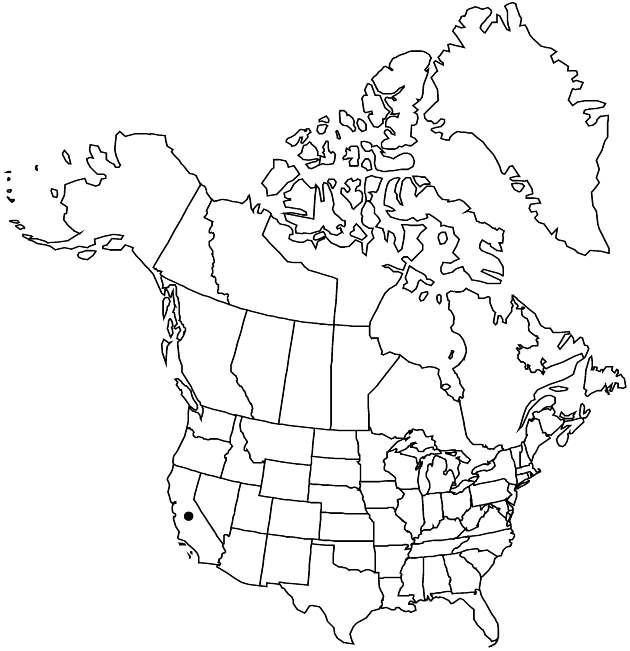Difference between revisions of "Calycadenia villosa"
in A. P. de Candolle and A. L. P. P. de Candolle, Prodr. 5: 695. 1836.
FNA>Volume Importer |
FNA>Volume Importer |
(No difference)
| |
Revision as of 18:49, 24 September 2019
Plants 10–40 cm; self-incompatible. Stems (± reddish distally) simple or branched (branches 1–4+ and ascending, or more numerous and spreading, rigid), hirsutulous-hispidulous, ± villous. Leaves (sometimes basal clusters persisting to flowering) mostly alternate, 2–5 cm, ± hispidulous (margins ± densely ciliate, especially proximally). Heads in ± spiciform arrays (1–3 per node). Peduncular bracts (crowded, closely investing, obscuring heads before flowering) lance-elliptic to linear (± flat distally), 3–10(–15) mm (hirsutulous, bristly and/or pectinate-fimbriate, deeply grooved proximally), apices (often ± reddish) rounded to truncate, tack-glands (0–)1 (terminal). Phyllaries (± reddish distally) 5–6 mm, abaxial faces hirsutulous, usually bristly, ± shaggy long-hairy near distal margins, tack-glands 0. Paleae 5–6 mm. Ray florets 1–4; corollas white to pinkish, tubes ca. 2 mm (papillate), laminae ca. 5 mm (central lobes much narrower than laterals, widest at bases, symmetric, laterals asymmetric, sinuses 1/3–1/2 laminae). Disc florets 5–15; corollas white to pinkish, 5–6 mm. Ray cypselae ca. 2.5 mm, smooth, densely appressed-hairy. Disc cypselae ca. 2.5 mm, appressed-hairy, especially on angles; pappi of ca. 10 lanceolate-aristate scales ca. 4–6 mm. 2n = 14.
Phenology: Flowering spring–summer.
Habitat: Dry, rocky hills, ridges
Elevation: 300–1100 m
Discussion
Calycadenia villosa occurs in Monterey and San Luis Obispo counties and is often localized. It is in the Center for Plant Conservation’s National Collection of Endangered Plants.
Selected References
None.
